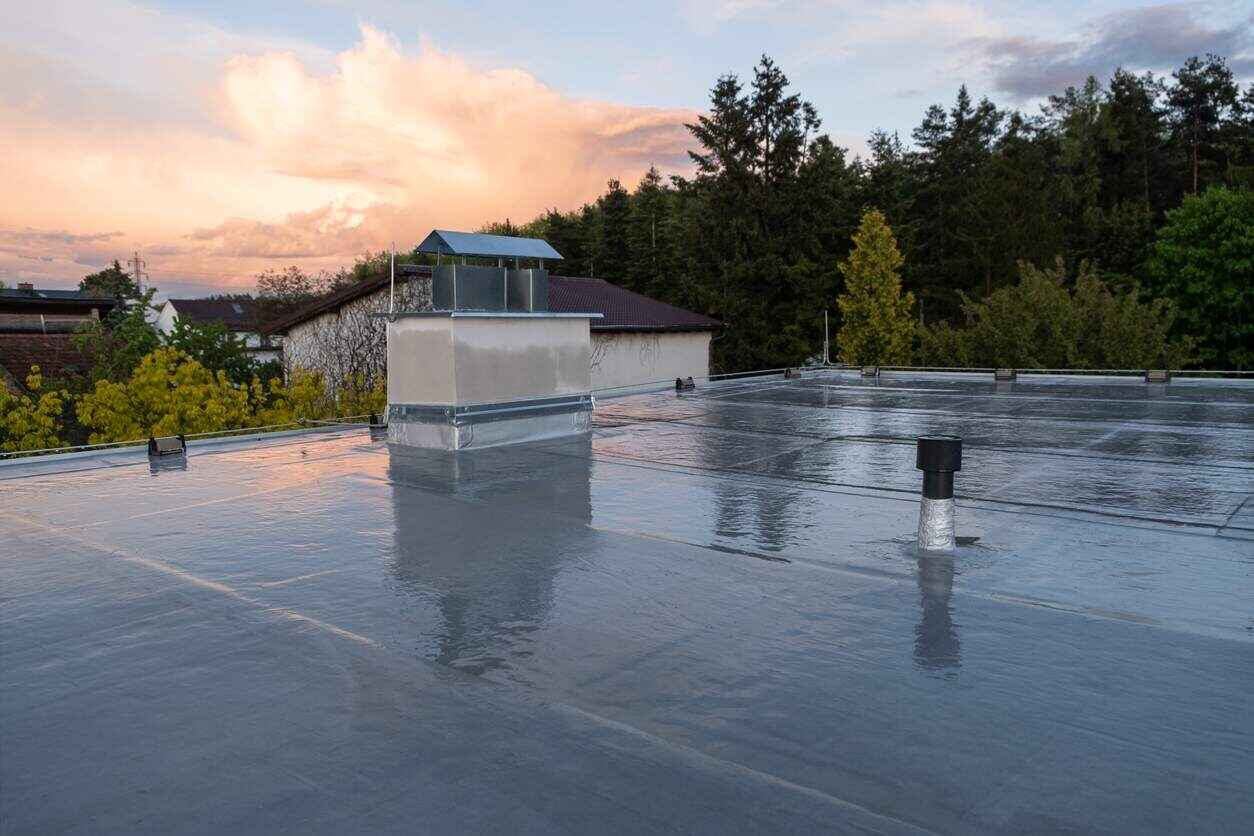How Long Do Flat Roofs Last?
You might have heard that flat roofs have a reputation for lasting less than pitched roofs. However, have you considered the various factors that can influence the lifespan of a flat roof?
Key elements to consider include the type of materials used and the quality of installation. Understanding these factors can help you make informed decisions about your flat roof.
So, what determines how long a flat roof can withstand the elements?
Factors Affecting Flat Roof Lifespan
Proper maintenance is crucial in determining the lifespan of flat roofs. Regular inspections and timely repairs are essential in ensuring this longevity. With the help of an Austin roofer, you can promptly address minor issues to prevent them from escalating into more significant, costly problems. Another factor to consider is the quality of materials used to construct your flat roof. High-quality materials that are installed correctly can significantly extend the lifespan of your roof. Investing in durable materials upfront can save you from premature roof replacement in the future.
Average Lifespan of Flat Roofs
On average, flat roofs have a lifespan of 10 to 25 years, influenced by factors like maintenance levels, materials, and climate conditions. Regular inspections and immediate repairs can prolong the life of a flat roof, pushing it towards the upper end of this range. Effective maintenance practices, such as removing debris, monitoring standing water, and quickly repairing any damage, can significantly enhance the durability of your flat roof.
The materials used in constructing the flat roof are crucial in determining its longevity. Common materials like EPDM rubber, TPO, PVC, and modified bitumen each have different lifespans and maintenance requirements. Additionally, the climate in which your building is located affects the roof’s durability.
Signs of Flat Roof Deterioration
Inspecting your flat roof regularly can help you identify early signs of deterioration. Look out for any ponding water, which can indicate poor drainage and lead to roof damage. Check for cracks or tears in the roofing material, as these can allow water to seep in and cause leaks.
Keep an eye on any blistering or bubbling on the surface, as this may signal trapped moisture within the roof layers. Peeling or curling of the roof membrane is another red flag that your flat roof may deteriorate. Additionally, if you notice any mold or algae growth, it could indicate excess moisture and poor ventilation.
Maintenance Tips for Flat Roofs
Consistent upkeep is essential to guaranteeing the long-term durability of your flat roof. Start by clearing debris, such as leaves and branches, that can accumulate and retain moisture, leading to roof deterioration.
Inspect your roof frequently for any signs of damage, such as cracks, blistering, or pooling water. Addressing these issues promptly can prevent them from worsening and causing more extensive damage.
Trim back any tree branches that overhang the roof to prevent them from rubbing against it and causing abrasions. Check the flashings around vents, skylights, and chimneys for gaps or signs of wear, as these are common areas where leaks can develop.
Extending the Lifespan of Flat Roofs
To proactively preserve the longevity of your flat roof, considering additional protective measures can significantly extend its lifespan.
A high-quality roof coating is one effective way to enhance your flat roof’s durability. Roof coatings protect against harsh weather conditions, UV rays, and other external factors that can cause damage.
Regular inspection of your roof for signs of wear and tear, such as cracks or leaks, and promptly addressing these issues can prevent further damage and prolong its lifespan.
Additionally, scheduling routine maintenance checks with a professional roofing contractor can help identify and resolve potential problems before they escalate.


